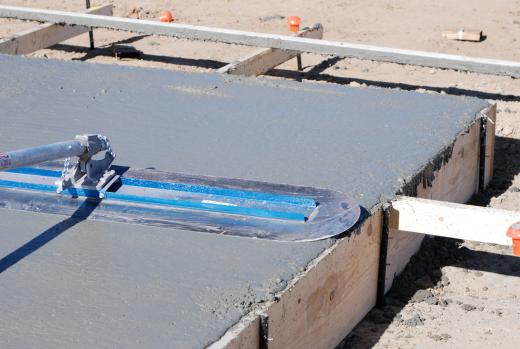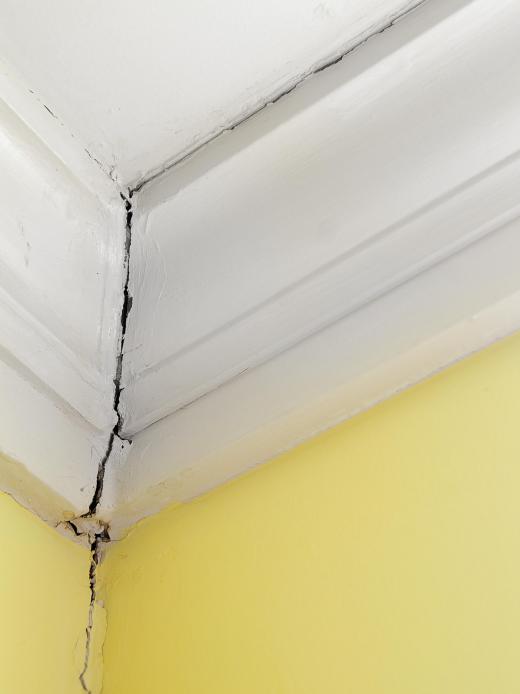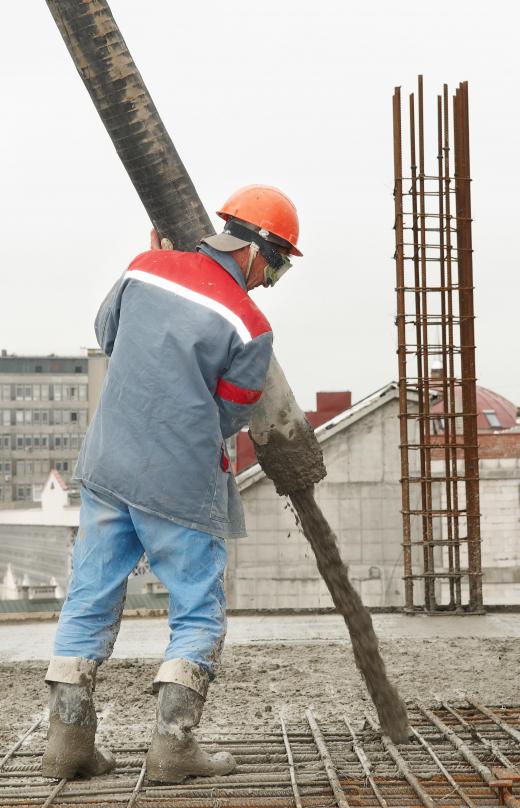A flat slab is a flat section of concrete. These slabs are classically used in foundations, although they can also be used in the construction of roadways, paths, and other structures. Depending on the size and complexity of a flat slab, it may need to be designed by an engineer who is familiar with the limitations and needs of slabs, or it may be possible for a handy do it yourselfer to make one in an afternoon for a simple project.
Typically, a flat slab is made with reinforced concrete, in which rebar is criss-crossed in the forms to provide support and reinforcement once the concrete is poured and hardened. The slab design is designed to be reinforced in several directions so that it can withstand stresses such as shifting ground, earthquakes, frost, and so forth. Failure to fully reinforce a flat slab can cause it to crack or give along weak lines in the concrete, which will in turn cause instability.

For some sites, a flat slab is poured in situ. In this case, the site is prepared, forms for the concrete are set up, and the reinforcing rebar or other materials are laid down. Then, the concrete is mixed, poured, and allowed to cure before moving on to the next stage of construction. The time required can vary considerably, with size being a major factor; the bigger the slab, the more complex reinforcement needs can get, which in turn adds to the amount of time required for set up. Once poured, the slab also has to be examined and tested to confirm that the pour was good, without air pockets or other problems which could contribute to a decline in quality.

In other cases, a flat slab may be prefabricated off site and transported to a site when it is needed. This may be done when conditions at the site do not facilitate an easy pour, or when the conditions for the slab's construction need to be carefully controlled. Transportation of the slab can be a challenge if it is especially large. Barges, cranes, and flatbed trucks may be required to successfully move it from the fabrication site to the site of the installation.

The flat slab foundation is not without problems. It can settle on uneven ground, allowing the structure to settle as well, for example, and during seismic activity, a slab foundation cannot hold up if the soils are subject to liquefaction. A flat slab can also become a major source of energy inefficiency, as structures tend to lose heat through the concrete.
Ever since she began contributing to the site several years ago, Mary has embraced the exciting challenge of being a About Mechanics researcher and writer. Mary has a liberal arts degree from Goddard College and spends her free time reading, cooking, and exploring the great outdoors.

